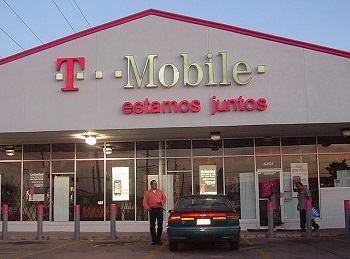Nielsen research results show smartphone ads are getting the job done and send the message to the right people.
Results from a recent Nielsen research study are supporting the use of mobile marketing campaigns. As it turns out, the data indicates that these ads are highly effective in reaching targeted consumers.
In fact, some forms of mobile marketing ads are as effective – if not more so – than desktop advertising.
As this type of insight regarding mobile marketing campaigns is produced by more research firms, it is expected that spending on this advertising channel will keep rising. While some have said that this will be to the detriment of desktop ads, others have predicted that it’s more likely to impact more traditional methods of advertising – such as TV and print – before it reaches desktop.
Nielsen’s study on the effectiveness of this method analyzed data from 40,000 mobile marketing campaigns.
 Those mobile advertising campaigns occurred at any time between April 2016 and June 2016. They were presented over a spectrum of mobile apps, websites and digital services. What Nielsen found was that this technique allowed the ads to reach 60 percent of their targeted consumers. That represents an improvement of 29 percent when compared to the same time during 2015.
Those mobile advertising campaigns occurred at any time between April 2016 and June 2016. They were presented over a spectrum of mobile apps, websites and digital services. What Nielsen found was that this technique allowed the ads to reach 60 percent of their targeted consumers. That represents an improvement of 29 percent when compared to the same time during 2015.
The study went on to reveal that the effectiveness of mobile ad campaigns has a greater effectiveness for reaching:
• A more targeted audience – The campaigns targeting consumers aged 18 to 34 years successfully reached them 63 percent of the time over mobile. Comparatively, the rate over desktop was 53 percent. The Nielsen report suggested that this was due to the personal nature of mobile devices and the shared nature of computers.
• Women – Campaigns targeting women aged 18 to 49 years old were successful in doing so 53 percent of the time over mobile. Over desktop, that figure was 45 percent.
As shoppers use their smartphones to an increasing degree, mobile marketing campaigns are able to better reach their audiences. This allows for the placement of ads that are more relevant to consumers and will likely increase the use of this advertising channel, said Nielsen.
During times of congestion, the phone data is given priority even for consumers paying for 4G tethering.
T-Mobile USA has revealed that it has started a practice of mobile hotspot throttling. This will occur at times when the network is heavily congested. The purpose is to give priority to smartphones and other mobile devices with data through the cellular network.
The company has been sending messages to advice customers about this recent change.
The website explained the mobile hotspot throttling by saying that “We just made your network better again. T-Mobile device data comes first. We’ve primed the network for on-device use.” The website went on to say “So now when there’s congestion, you may notice higher speeds for data on your T-Mobile devices versus Smartphone Mobile Hotspot (tethering).”
 When the network becomes heavily congested, the service will automatically give priority to on-device data. This, the company admits, will bring about slower tethering speeds. Those slower speeds will occur even for people who have paid for them.
When the network becomes heavily congested, the service will automatically give priority to on-device data. This, the company admits, will bring about slower tethering speeds. Those slower speeds will occur even for people who have paid for them.
The mobile hotspot throttling should keep smartphones moving fast but laptops will have a more sluggish connection.
The change has been made at the same time that T-Mobile has been working to encourage customers to switch to somewhat unlimited plans. They want people to use plans labeled as unlimited but that actually do have certain limitations applied to them. They are hoping the switch will occur to send people away from the data buckets.
The newly launched T-Mobile One plan does not have any coverage fees or data caps. However, it does have a throttle that reduces video to 1.5 Mbps. This makes it possible to enjoy about 480p resolution but not more. Moreover, when customers consume over 26 GB in a month, their data usage is throttled, as well when connecting to cell towers.
The standard plan through T-Mobile One has a monthly fee of $70. While those customers can connect to hotspots, it is throttled to 512 kbps no matter the time of day or congestion. This is considerably slower than the un-throttled 4G LTE mobile tethering download speeds from the company. Those typically run between 3 and 25 Mbps, but can run as high as 90 Mbps. T-Mobile One customers can pay an additional monthly $25 for faster hotspot use and high-def video, but even in that package is subject to the mobile hotspot throttling at congested times.
 Those mobile advertising campaigns occurred at any time between April 2016 and June 2016. They were presented over a spectrum of mobile apps, websites and digital services. What Nielsen found was that this technique allowed the ads to reach 60 percent of their targeted consumers. That represents an improvement of 29 percent when compared to the same time during 2015.
Those mobile advertising campaigns occurred at any time between April 2016 and June 2016. They were presented over a spectrum of mobile apps, websites and digital services. What Nielsen found was that this technique allowed the ads to reach 60 percent of their targeted consumers. That represents an improvement of 29 percent when compared to the same time during 2015.
 When the network becomes heavily congested, the service will automatically give priority to on-device data. This, the company admits, will bring about slower tethering speeds. Those slower speeds will occur even for people who have paid for them.
When the network becomes heavily congested, the service will automatically give priority to on-device data. This, the company admits, will bring about slower tethering speeds. Those slower speeds will occur even for people who have paid for them.